Catriona AitkenBBC Wales
Many parents wish they had eyes in the back of their head when their toddlers start reaching for things they shouldn’t, but for Jess Harry, it seems nothing is off limits for her son Junior.
The mum-of-two first became aware that he liked to try and eat inedible items when he licked the Velcro in his tactile books as a baby.
Since then, the 21-month-old has “scoffed” sand “by the handful” and eaten playgroup rugs as well as furniture all over his home, including his own cot.
It wasn’t until September that Junior received a diagnosis of pica – a condition where a person repeatedly craves and eats non-edible items with no nutritional value.
“Even if nothing is available to him he’ll seek it out, he will find something,” said Jess, from Brymbo, Wrexham.
The 31-year-old had to pull Junior out of nursery because he was eating “a disgusting amount of sand”.
Jess admits the ridiculous nature of the situations Junior sometimes finds himself in – but said there was a serious side too.
Jess had to move Junior into a metal toddler bed after he started eating his wooden cot, but this meant he could get out in the night and he chewed his door frame.
This led to him having lead in his blood as “the old layers of paint have got lead in”.
Junior is now in a travel cot or playpen until the problem is resolved and Jess raised the issue of lead paint with her housing association, Clwyd Alyn, but said she wasn’t taken seriously and no action was taken.
Clwyd Alyn said repair work was scheduled to be carried out at the property and it would “continue to liaise with the family and swiftly act on appropriate guidance about how to deal with this situation going forward”.
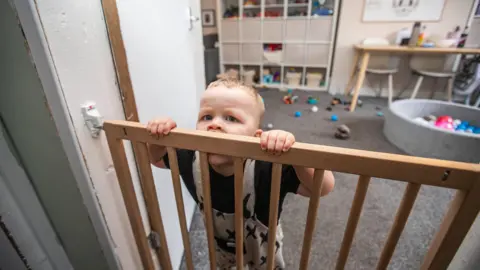 Craig Colville
Craig ColvilleThere’s a variety of textures that Junior goes for, but Jess said wood and cardboard were his current obsessions.
He and his brother Jack, seven, like playing with Hot Wheels but Jess has to keep Junior’s in a plastic tub after he bit through the basket they got for his toy cars.
On one trip to the supermarket to pick up a blind, Jess was walking out of the shop with Junior and “by the time we got to the car he’d chewed through the box the blind was in”.
“It takes literally seconds. I know it sounds unbelievable.”
 Jess Harry
Jess HarryJess had never heard of pica but, following a suggestion by a play leader, their health visitor requested blood tests that revealed iron deficiency – one of the possible causes of pica – and Junior was able to get a diagnosis.
Liquorice root is one “safe alternative” the family use to tempt Junior towards more edible fare.
It seems to work because it’s “literally a stick” but isn’t suitable for when he’s playing as it could be a choking hazard.
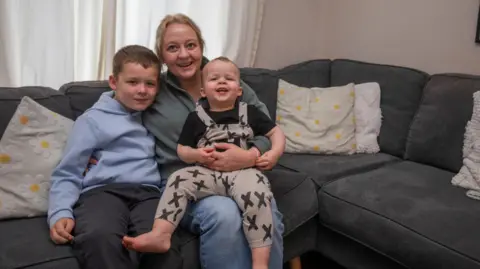 Craig Colville
Craig ColvilleAnother recent swap is Weetabix, which mimics the dry, crunchy texture Junior favours.
“He cannot be left alone. If I leave him in the living room, which is a Junior-safe zone apart from the walls, there’s still something that he does, or goes for,” Jess said.
“I just think, what next? I joke and say I need to live in an empty shipping container.”
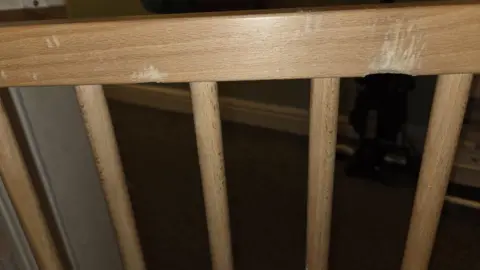 Jess Harry
Jess HarryWhat is pica?
- It can occur in people of all ages, but is more likely to first appear in children and is often present alongside another medical or developmental condition
- Like other eating disorders, there is no cure, but steps to manage it include redirecting attention, managing anxieties and replacing pica items with similar, but safe, alternatives
- Digital Health and Care Wales said it did not have a record of the number of people diagnosed with the condition and only tracked it by hospital admissions
- However, recorded numbers likely underestimate the prevalence as not all patients require hospital admission
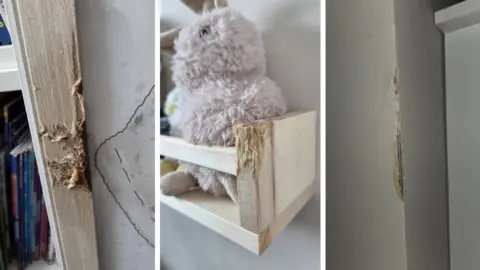 Jess Harry
Jess HarryJess said Junior was “really fussy food-wise anyway”, making alternatives difficult, but hopes she can “reason with him a little bit” when he gets older.
The National Pica Advisory Service, which offers specialist training and advice, said it had supported 250 families since it was established in 2023.
It stressed pica could be fatal, citing the cases of 21-year-old James Frankish and 19-year-old Owen Garnet.
The organisation has drafted guidelines for health, social care, housing and education services for assessing, diagnosing and supporting people with pica, with the aim of getting these formally adopted.
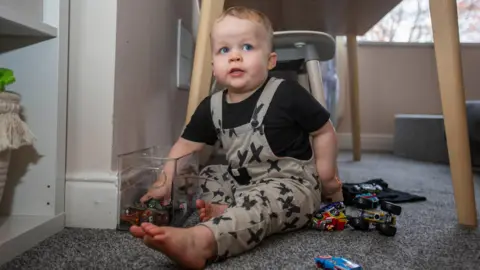 Craig Colville
Craig ColvilleJess wishes more people knew about the condition so she didn’t have to keep repeating herself, could access more support and feel less alone.
“Someone will invite you to the park and I feel like I’m just making excuses all the time but I know that I might as well stay home, because it’s more stressful for me to be in the park.”
Disclaimer : This story is auto aggregated by a computer programme and has not been created or edited by DOWNTHENEWS. Publisher: BBC







